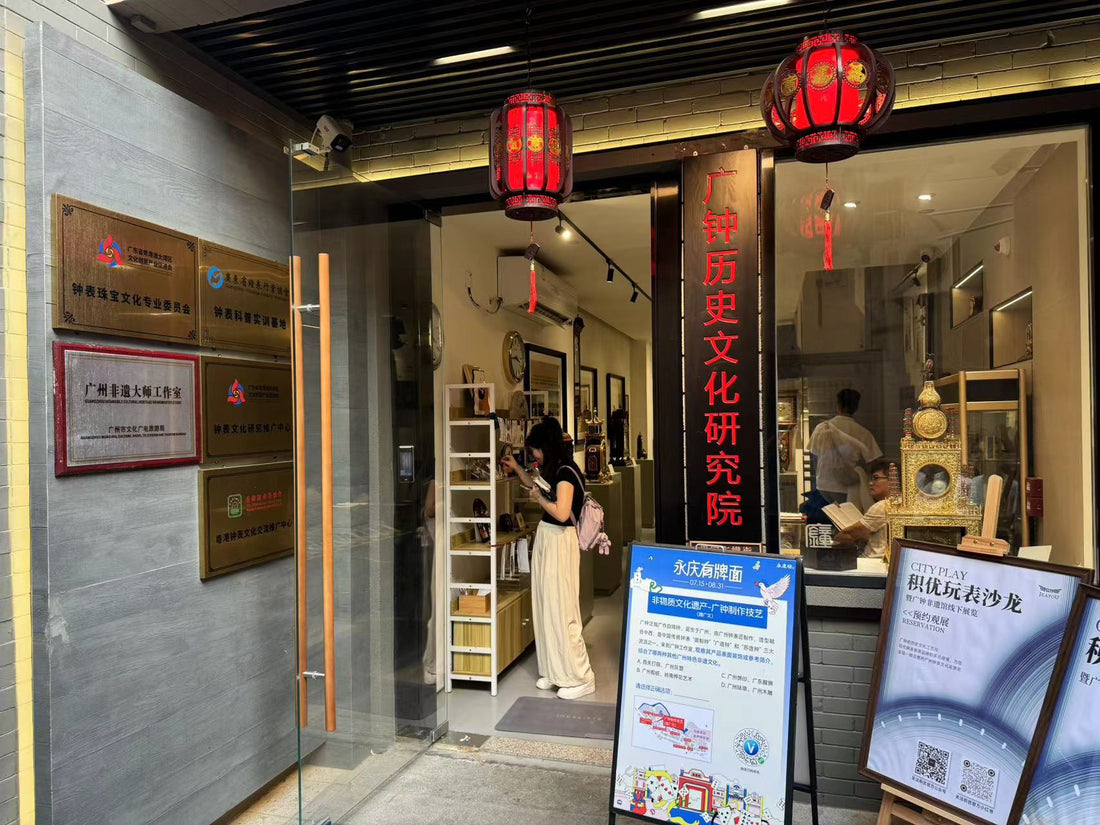China, the historical land of culture blend from different countries in every aspect of life throughout centuries of interactions with different foreign states throughout documented history, and now benefited from the acute rise of modern technology and has now become the second largest economy, has kept something precious in one of the most discussed field now, the field of horology. Instead of being sinked into the sea of memory and history, there is the last standing man to keep this clock making technique and mechanisms, called Wei Guang Wen.

Since 2002, Wei has been passionately dedicated to reviving the culture of Canton Clock (Guangzhong). His contributions to horology in China have earned him numerous prestigious titles, including Director of the Watch and Jewelry Culture Professional Committee of the GD-HK-MAC Greater Bay Area Economic and Cultural Promotion Association and Deputy Director of the Collection Research Committee of the China Horologe Association. He is also the chairman of Time Lord, a clock company with a nationwide franchise, promoting top-tier mechanical music bells, music boxes, and brands such as Switzerland’s REUGE and Germany’s HERMLE.
Canton Clock (Guangzhong), a centuries-old tradition, may seem distant today. Wei explained in an interview in early years that the art and technology of Canton Clock reached their zenith hundreds of years ago, when these exquisite timepieces were typically collected by emperors and rarely seen by the public. Today, Canton Clock clocks are primarily found in the Forbidden City or museums, leaving many people unfamiliar with this cultural treasure.
Wei described Canton Clock as having three defining characteristics. Firstly, its appearance blends Chinese and Western elements, combining Western Baroque style with distinctive Chinese motifs such as Lingnan folk symbols like treasure bottles and golden pineapples, along with the grandeur of Chinese palace aesthetics. Secondly, the internal mechanisms of Canton Clock are complex, requiring exceptional craftsmanship and precision in their assembly. Lastly, the artistic value of Canton Clock is unparalleled, with intricate exterior decorations and inlay work that reflect the mastery of Lingnan folk craftsmanship.
Wei also touched on the historical background of Canton Clock, which refers to the chiming clocks produced in Guangzhou during the reigns of the Kang Xi, Yong Zheng, Qian Long, and Jia Qing emperors. By the mid-Qian Long period, Guangzhong clocks had reached a high level of craftsmanship and were often presented as tributes to the imperial court. These clocks, produced by skilled craftsmen in Guangzhou, were highly valued by the palace and nobles of the time. However, debates persist within academic circles regarding the classification of Canton Clock clocks that feature Western movements but were crafted in Guangzhou. As such, the term "Canton Clock" has come to represent a broader cultural concept.
As the sole inheritor of this national intangible cultural heritage, Wei is committed to promoting and preserving Canton Clock culture. He actively participates in exhibitions and has pledged to produce more replicas to bring this historical craft closer to the public. In addition, he seeks to collaborate with watch brands to create cultural derivative products that highlight Canton Clock's significance. However, Wei also acknowledges that the craftsmanship of Canton Clock has been nearly lost since its decline. Only a few skilled artisans continue to produce Canton Clock clocks out of personal passion. He hopes to gather more resources to study and protect Canton Clock culture, collect historical documents, and reconnect with the remaining masters and craftsmen to systematically rediscover, reproduce, and pass on these techniques.

A significant step in this effort was Wei's exhibition at the 42nd Hong Kong Clock & Watch Fair, where he showcased a Canton Clock clock he crafted. Standing over 40 cm tall, more than 20 cm wide, and about 20 cm thick, the clock featured a copper body adorned with gold-plated hollow carvings and inscriptions. The intricate patterns culminated in a round tent at the top, beneath which a viewing box housed a gilded Buddha statue. A purple-robed monk struck the bell on the left, while a yellow-robed monk struck the wooden fish on the right. Below this viewing box was the round clock face, inspired by palace Canton Clock from the late Qing Dynasty. Wei emphasized that Canton Clock clocks combine Western styles with traditional Chinese elements such as pavilions, terraces, towers, and Lingnan decorative art, making them a unique fusion of cultural and artistic traditions. The internal mechanical structure of Canton Clock clocks is complex and demands precision, making their manufacturing, installation, debugging, and maintenance highly challenging.

Another major milestone in Wei’s efforts is the establishment of the Canton Clock History and Culture Institute. Founded in 2018, the institute is located on the Intangible Cultural Heritage Street of Yong Qing Fang in Liwan District. In 2022, it was recognized as the eighth batch of municipal intangible cultural heritage representative project protection units. The institute offers visitors a glimpse into the past, with antique clocks of various sizes and shapes displayed throughout. These pieces, made from materials like mahogany and brass, are adorned with lavish decorations of enamel, gilt, inlay, and ivory carvings. The rhythmic ticking of the gears and the occasional sound of mechanical chimes create a powerful sensory experience, transporting visitors into a different era. More importantly, the institute’s mission is not only to display Canton Clock artifacts but also to promote cultural exchanges, hold educational activities, and inspire the next generation to engage with this unique cultural heritage.

Wei Guang Wen is not just a clockmaker; he is a visionary shaping the future of this uniquely blended culture. His efforts to preserve Canton Clock culture extend beyond his skillful craftsmanship to his innovative leadership. By establishing and nurturing the Canton Clock History and Culture Institute, Wei has demonstrated his unwavering commitment to safeguarding this cultural legacy for future generations.


